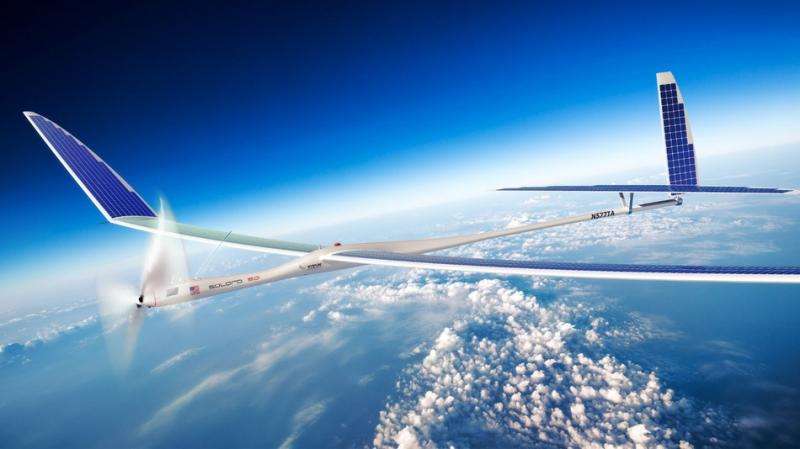February 1, 2016 weblog
SkyBender project looks at 5G delivery with drones

A number of sites have picked up on the story from The Guardian: Google is reportedly testing a 5G network and it is through drones. A subhead in TechRadar called it high-speed data for the people.
The project code name is SkyBender. "Eventually, the firm wants its solar-powered unmanned aerial vehicles to provide high-speed connectivity across the globe," said David Nield in TechRadar.
The project is in trial phase in New Mexico. The first thought that comes to mind is speed; the plan could offer data speeds around 40 times faster than maximum 4G/LTE speeds available now to phones and other devices, said TechRadar.
The trials are being conducted at New Mexico Spaceport Authority, said The Guardian, with a dedicated flight control center installed in the Spaceflight Operations Center. Google is temporarily using 15,000 square feet of hangar space in the Gateway to Space terminal. The solar-powered drones are being tested at Spaceport America.
Drones, said Nield, are in this instance behaving as the mobile hotspots rather than hot air balloons, as in Project Loon. "Signals are beamed from a phone to a base station via the autonomous aircraft cruising in the sky," he said.
One difficulty that Google is addressing in this project is that of range. The new network runs via millimeter-wave radio transmissions. The range is much shorter than in 4G broadcasts. TechRadar said that Google was experimenting with complex "phased array" technology to boost the range of its 5G drones.
A professor went over the upside and downside of this technology in The Guardian report. "The huge advantage of millimeter wave is access to new spectrum because the existing cellphone spectrum is overcrowded. It's packed and there's nowhere else to go." Jacques Rudell, a professor of electrical engineering at the University of Washington in Seattle, added that the downside was range. Millimeter wave transmissions have a much shorter range than mobile phone signals.
Google is testing a broadcast at 28GHz; this would fade out in around a tenth the distance of a 4G phone signal. Google needs to experiment with focused transmissions from a so-called phased array. "This is very difficult, very complex and burns a lot of power," Rudell said in The Guardian.
According to TechRadar, Google had nothing to say about its plan to make the project public. Nonetheless, Nield said, "initiatives such as Project Fi show the company is determined to get as much of the world connected to high-speed internet as it can."
Back in October, Neal Ungerleider, who covers science and technology for Fast Company, noted that FCC Chairman Tom Wheeler had given the mobile industry a green light to use 5G spectrums and Verizon even announced plans to have some sort of a 5G commercial network up and running for 2017. Beyond being a wireless network with speeds beyond 4G, he said, "5G is less about being able to stream Netflix really quickly than about creating an infrastructure backbone for connected cars and connected devices everywhere."
Tyler Lee in Ubergizmo, meanwhile, reminded readers that "It is unclear as to what the end game from this project is, but off the top of our heads we can imagine Google using this to deliver internet access during emergencies, where drones will be able to fly in and out of areas to provide access to communications where necessary."
Google has permission from the FCC to continue its tests in New Mexico until July, said The Guardian.
© 2016 Tech Xplore





















